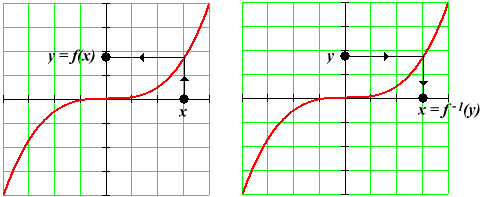
If a function is invertible, then there must be a rule to follow from an output value back to the unique input that produced it. Following this "backwards" rule, of course, will generally be quite different than following the "forward" rule. The inverse, if it exists, is a brand-new function.
When it exists, we give the inverse of a function f the name f –1, read "f inverse". Thus, if

In the plot above, ![]() .
.
WARNING:
Notice that, since f and f –1 "undo" one another, we always have:
If f is the "poison", then f –1 is the "antidote" when applied in composition.
|
|
|
|
| Back to Contents | ||